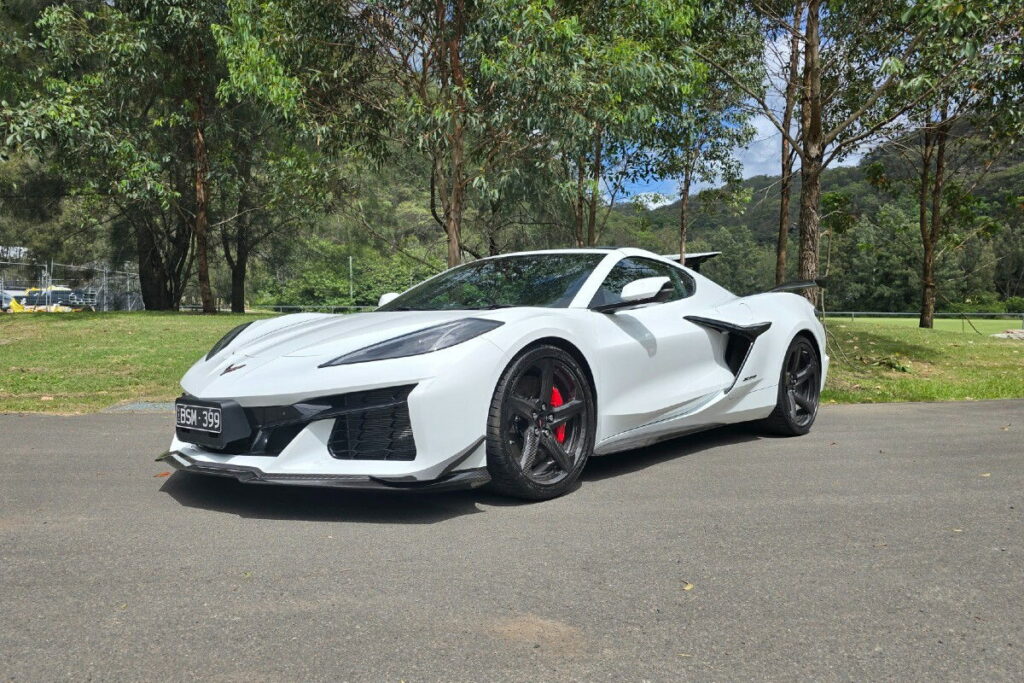
The Chevrolet Corvette Z06, designed to excel on the racetrack, was recently put to the test by racing legend Craig Lowndes. While the Z06 is engineered for high performance, the question remains: can it transition smoothly from track to road? On paper, the Z06’s high-revving engine and aggressive aerodynamics suggest it might be a challenging companion for everyday driving.
However, after spending a week with the Z06, those concerns quickly dissipated. The car proved to be as comfortable on the road as it is formidable on the track. This development follows a growing trend where American brands, like Chevrolet, are increasingly challenging their European counterparts in the high-performance sports car arena.
Race-Bred Engineering Meets Road Comfort
The Z06’s development alongside the new GT3 race car underscores Chevrolet’s commitment to blending road and race technology. Under the hood lies a newly-developed 5.5-liter V8 engine, featuring a race-derived flat-plane crankshaft. This innovation allows the engine to rev harder and deliver power more linearly, producing 475kW and 595Nm, while emitting a sound more akin to European supercars than traditional American muscle.
Our test vehicle, equipped with the optional Z07 package, boasted an eye-catching rear wing and additional aerodynamic features. It also included carbon ceramic brakes and Australian-made carbon fiber wheels. Despite its track-focused design, the Z06 retains the grand tourer comfort reminiscent of its predecessors, thanks to its mid-engine layout.
Driving Dynamics and Market Position
On the road, the Z06 surprises with its compliance and comfort. Though its appearance is aggressive, with prominent spoilers, it behaves tamely in traffic. The engine, capable of reaching nearly 9000rpm, remains docile and responsive at low speeds, making city driving a breeze. Yet, on winding roads, the Z06 transforms into a razor-sharp supercar, showcasing the precision and poise expected from top-tier competitors.
Financially, the Z06 positions itself competitively. Starting at $336,000, the Z07 package adds $50,000, and carbon fiber wheels contribute an additional $22,000, bringing the total to $408,000. Despite this, it undercuts many rivals, such as the Porsche 911 GT3, McLaren Artura, Maserati MC20, and Ferrari 296 GTB, which all start at significantly higher prices.
Challenges and Opportunities
While the Corvette may lack the badge appeal of European sports cars, it compensates with exclusivity and performance. Chevrolet limits the number of Z06 models produced each year, enhancing its allure. However, the cabin design and switchgear still fall short of the best in class, a point that may deter some purists.
According to industry experts, the Z06 represents a significant step forward for American performance cars, challenging long-held perceptions. As automotive journalist John Doe notes,
“The Z06 is a testament to how far American engineering has come. It’s not just about raw power anymore; it’s about delivering a complete driving experience.”
Looking ahead, the Z06’s ability to blend track prowess with road comfort positions it as a formidable contender in the supercar market. As Chevrolet continues to refine its offerings, the Z06 could pave the way for future models that further blur the lines between American and European performance vehicles.
In conclusion, while the Corvette Z06 may not yet dethrone its European rivals, it certainly demands attention. For those seeking a supercar that offers both exclusivity and exhilarating performance, the Z06 stands as a compelling choice, even garnering the approval of racing icons like Craig Lowndes.







